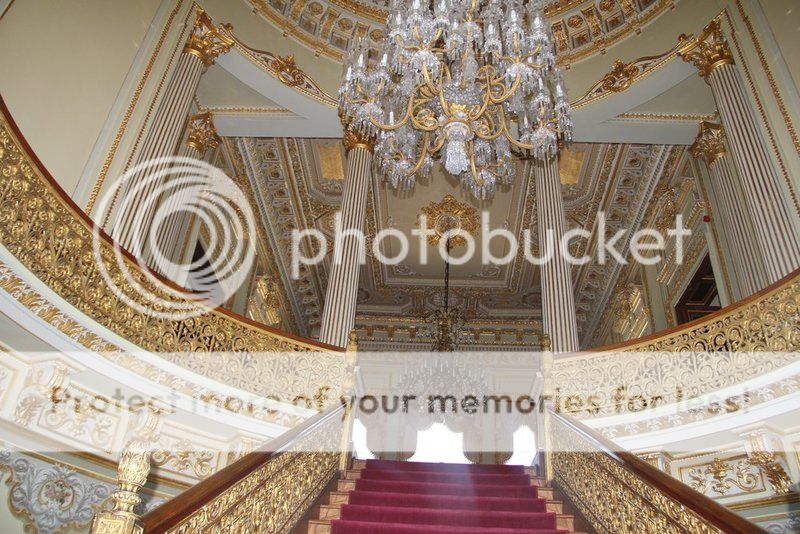GPS : 41°04'43.0"N 29°03'54.0"E / 41.078611, 29.065000

PHOTOGRAPHS ALBUM
Küçüksu Palace or Küçüksu Pavilion, aka Göksu Pavilion, (Küçüksu Kasrı) is a summer palace in Istanbul, Turkey, situated in the Küçüksu neighborhood of Beykoz district on the Asian shore of the Bosphorus between Anadoluhisarı and the Fatih Sultan Mehmet Bridge. The tiny palace was used by Ottoman sultans for short stays during country excursions and hunting.
The green area between Göksu and Küçüksu rivers rising .on the slopes of Alemdağ and flowing into Bosphorus near Anadoluhisarı was one of the imperial gardens of sultans and became one of the most favourite promenade in time. Evliya Celebi, the famous traveller of 17th century described Göksu as a "river like adam’s ale" where people used to go boating, a peaceful area surrounded with rose gardens, small mansions and imperial mills.
Sultan Murad IV (1623-1640) ordered to landscape Küçüksu and its environs covered with dense cypress trees up to Kandilli and named the area as "Silver Cypress". The first construction in the imperial garden began during the reign of Sultan Mahmud I (1730-1754). His Grand Vizier Divitdar Emin Mehmed Pasha ordered to built a timber pavilion for Sultan between the years 1751-1752 who used to go there to hunt and target practice.
During the reign of Sultan Selim III (1789-1807) this two-storeyed building by the sea side was restored and in 1806 he ordered to built a fountain there for his beloved mother Mihrişah Valide Sultan. The pavilion which was also used during the period of Sultan Mahmud II (1808-1839) was demolished by the order of Sultan Abdülmecid (1839-1861) and Küçüksu Pavilion was built there between the years 1856-1857.
Its facade decoration was restored and enriched during the reign of Sultan Abdülaziz (1861-1876). The pavilion which was also one of the most popular places for Atatürk in Republican period was opened to public as a museum in 1996.
Küçüksu Pavilion was designed by Nikoğos Balyan and completed in 1857. The pavilion has a ground area of 15 x 27 meters and consists of a basement and two main storeys, the basement containing a larder, kitchen and servants' quarters. Both first and second floors have four corner rooms opening onto a central gallery, a plan which reflects that of the traditional Turkish house.
The pavilion was designed for short stays when the sultan took country excursions or went hunting in the woodland here. Unlike other imperial buildings Küçüksu was not surrounded by high walls but by castiron railings with gates on all four sides. During the reign of Sultan Abdülmecid's younger brother Sultan Abdülaziz (1861-1876) more elaborate decoration was added to the façade. All the outbuildings which once belonged to the pavilion have since been demolished.
The ornate seaward façade and double flight of steps sweeping exuberantly around the ornamental pool and fountain are decorated with diverse western motifs. This European exterior is echoed in the interior furnishing and decoration executed by Sechan, stage designer at Vienna Opera House.
The ceilings are richly decorated with carton-pierre moulding and painted designs. There are so many fireplaces made of Italian marble of various colours in diverse styles, that Küçüksu is like a museum of 19th century fireplace design. The elegant parquet floors have different patterns in each of the rooms, which are furnished with European style furniture, carpets and paintings.
The pavillion is garnished with rococo ornaments which added a fresh complexion to the pavilion with perfect external engraving. Sultan Selim III dedicated the Baroque style fountain to his mother, Valide Mihrişah Sultan, in 1807. The fountain and the pool in the garden are well integrated with the Küçüksu Pavilion. The pavilion was late returned into a museum showcasing carvings, crystal chandelers, carpets, and the the fireplace. All these give an intense visionary pleasure for visitors.
The building consists of two main stories and a basement on a footprint of 15 x 27 m. Unlike other palace gardens with high walls; its garden is surrounded by cast iron railings with one gate at each of the four sides. The basement was appointed with kitchen, larder, and servant's quarters, with the floors above reflecting the design of a traditional Turkish house - four corner rooms surrounding a central hall.
The rooms at the waterfront have two fireplaces while the others have one each, all fashioned from colorful Italian marble. The rooms boast crystal chandeliers from Bohemia, with curtains, furniture upholstery, and carpets woven in Hereke. The halls and the rooms exhibit paintings and arts objects; Sechan, stage designer at Vienna State Opera, was charged for the decoration of the interior.
After the establishment of the Turkish Republic, Küçüksu Pavilion was used as a state guest house for some years, but today is open to the public as a museum-palace. The pavilion was extensively restored in 1994 and the surrounding garden and parkland, nearby fountain and quay are now being transformed into a park where the public can enjoy picnics and excursions as in previous centuries. When this project is completed, the garden of Küçüksu Pavilion will be available for private receptions upon application.
Küçüksu Pavilion give the chance to rest within historic environments with cold-hot drinks, snack food and breakfast services. There is a cafeteria in the courtyard where you can sit and enjoy the ships passing while sipping your Turkish tea or Turkish coffee.
LOCATION SATELLITE MAP
WEB SITE : Department of National Palaces / Küçüksu Pavilion
MORE INFO & CONTACT
E-Mail : millisaraylar@tbmm.gov.tr
Phone : +90 212 236 9000
Fax : +90 212 259 3292
These scripts and photographs are registered under © Copyright 2017, respected writers and photographers from the internet. All Rights Reserved.
No comments:
Post a Comment